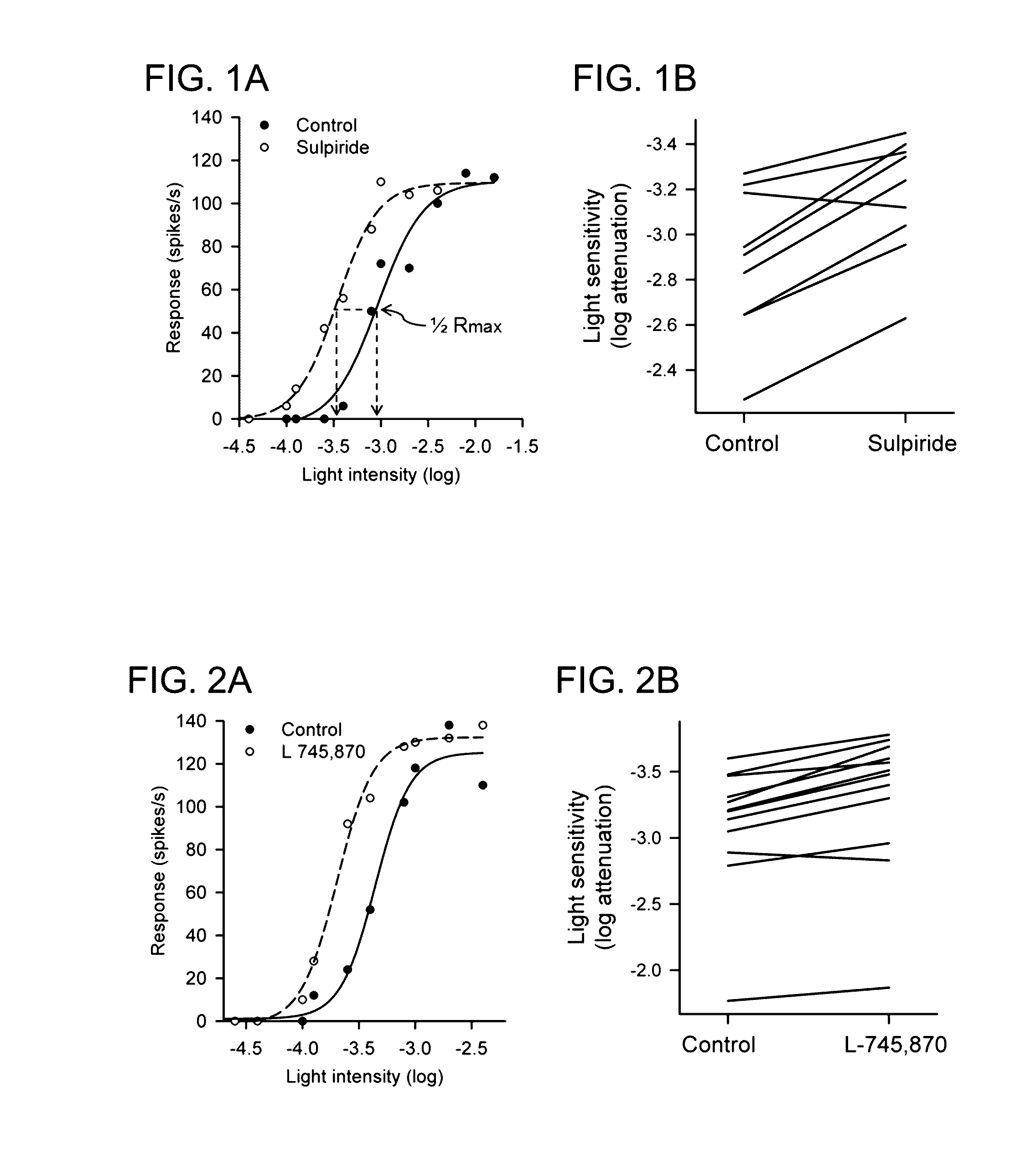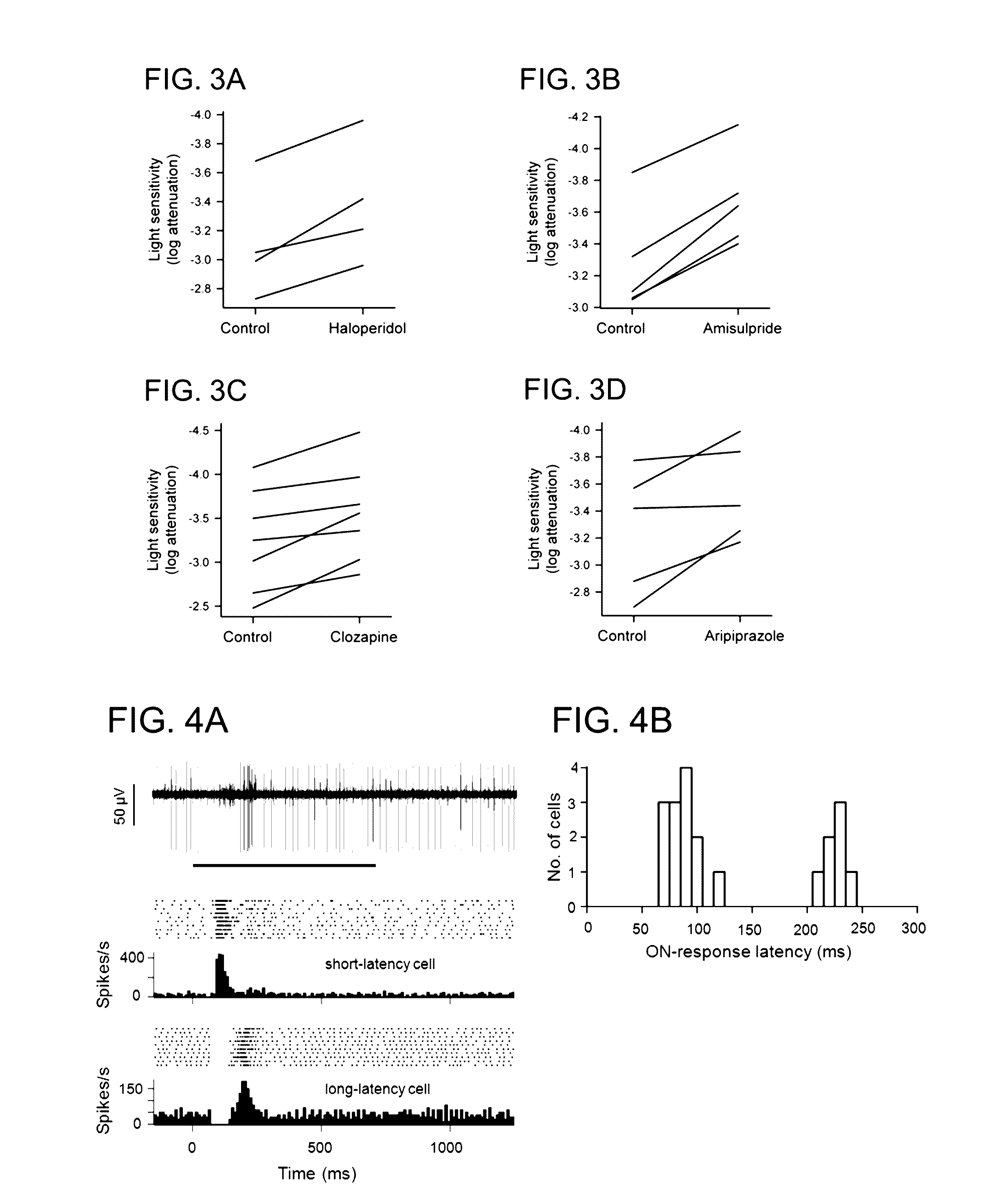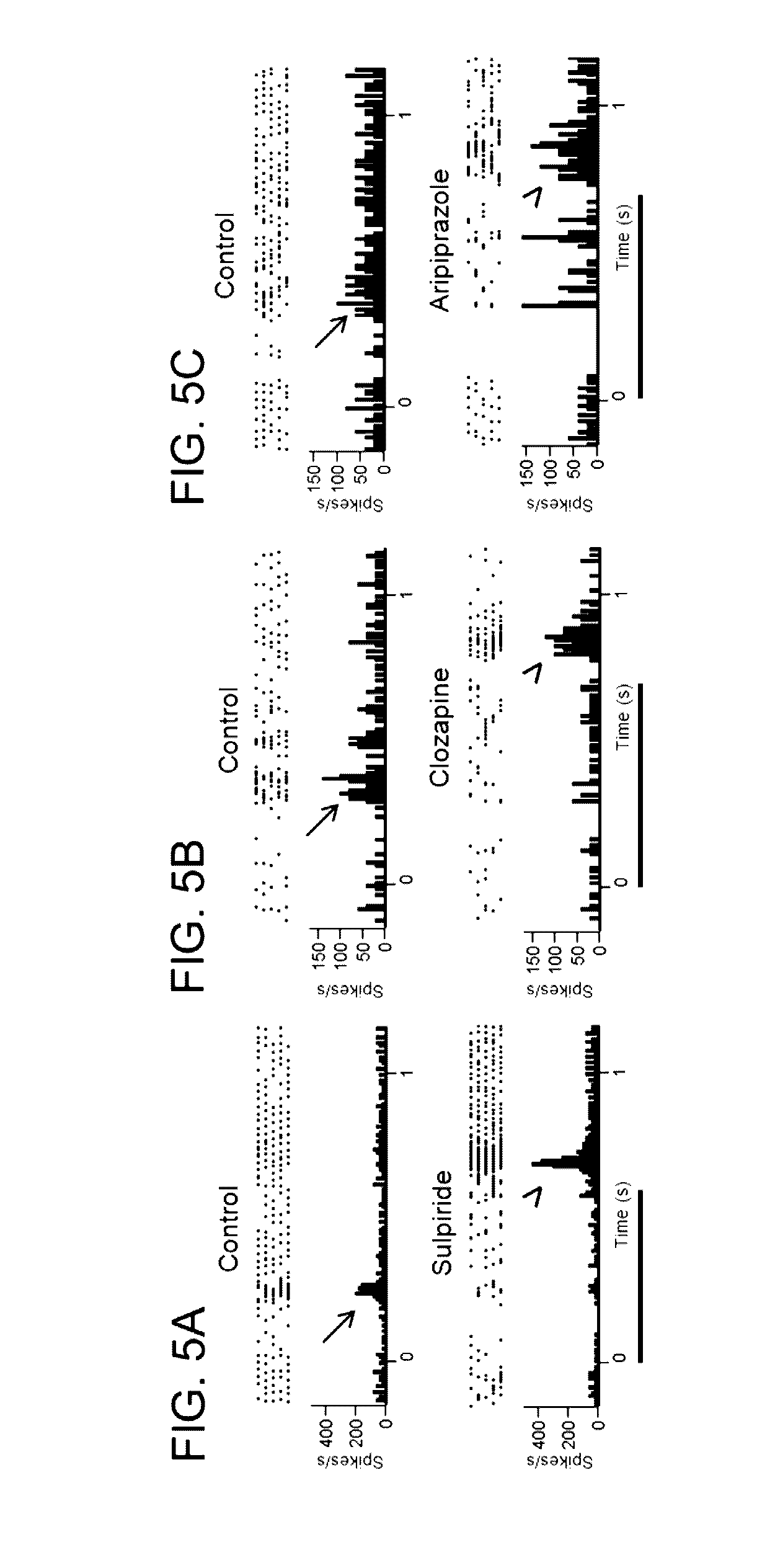Use of dopamine and serotonin receptor antagonists for treatment in a subject with retinal degeneration
a technology of serotonin receptor and dopamine, which is applied in the direction of heterocyclic compound active ingredients, pharmaceutical delivery mechanisms, medical preparations, etc., can solve the problems of photoreceptor degeneration, progressive loss of peripheral and central vision, and leading cause of blindness in people worldwid
- Summary
- Abstract
- Description
- Claims
- Application Information
AI Technical Summary
Benefits of technology
Problems solved by technology
Method used
Image
Examples
example 1
[0075]Sulpiride Increases Retinal Light Sensitivity
[0076]Materials and Methods
[0077]Animals and Tissue Preparation:
[0078]P23H-line 1 homozygous rats (age range 22-37 weeks) were used. Breeding pairs of P23H-line 1 homozygous rats were generously donated by Dr. Matthew LaVail (University of California San Francisco, Calif.). The room light was kept on a 12 hr light / dark cycle using standard fluorescent lighting. During the light cycle, the illumination at the level of the cages was 100-200 lux.
[0079]On the day of an experiment, a rat was euthanized with sodium pentobarbital (150 mg / kg, i.p.), and the eyes were removed and hemisected under normal room light. After removal of the vitreous humour from each eye, one eyecup was transferred to a holding vessel containing bicarbonate-buffered Ames medium (Sigma-Aldrich), which was continuously gassed at room temperature with 5% CO2 / 95% O2. The retina of the other eyecup was gently peeled from the retinal pigment epithelium / choroid and trimm...
example 2
[0091]L-745,870 Increases Retinal Light Sensitivity
[0092]Experiments similar to those described in Example 1 were carried out on retinas isolated from P23H rats.
[0093]L-745,870 was purchased from Tocris Bioscience (Minneapolis, MN) and dissolved in physiological saline (0.9% NaCl). As in Example 1, the drug solution was applied to the bathing solution using calibrated syringe pumps (Razel Scientific Instruments). Drug was bath applied for ˜10 min to ensure stable responses before effects were examined. Only one cell was studied in each retina to avoid possible residual drug effects. The effects of L-745,870, a dopamine D2-like receptor antagonist that is selective for D4 receptor (Patel et al., J. Pharmacol. and Exp. Ther. 1997, 283: 636-647), on the intensity-response functions of 12 P23H rat RGCs were examined. FIG. 2A shows the effect of L-745,870 on a representative P23H rat RGC that was stimulated with a spot of light. The light intensity that evoked a half-maximum response pri...
example 3
[0095]Haloperidol, Amisulpride, Clozapine and Aripiprazole Increase Retinal Light Sensitivity
[0096]Experiments similar to those described in Example 1 were carried out on retinas isolated from P23H rats.
[0097]Haloperidol, amisulpride, and clozapine were purchased from Tocris Bioscience (Minneapolis, Minn.). Aripiprazole was purchased from Sigma-Aldrich (St. Louis, Mo.). Haloperidol, amisulpride, and clozapine were dissolved in a small amount of dimethylsulphoxide (DMSO) and diluted in physiological saline (0.9% NaCl). Aripiprazole was dissolved in a small amount of 1 mM HCl and diluted in physiological saline. As in Example 1, the drug solutions were applied to the bathing solution using calibrated syringe pumps (Razel Scientific Instruments). Drugs were bath applied for ˜10 min to ensure stable responses before effects were examined. Only one cell was studied in each retina to avoid possible residual drug effects.
[0098]The effects of haloperidol, a D4 receptor antagonist and a D2 / D...
PUM
| Property | Measurement | Unit |
|---|---|---|
| temperature | aaaaa | aaaaa |
| diameter | aaaaa | aaaaa |
| diameter | aaaaa | aaaaa |
Abstract
Description
Claims
Application Information
 Login to View More
Login to View More - R&D
- Intellectual Property
- Life Sciences
- Materials
- Tech Scout
- Unparalleled Data Quality
- Higher Quality Content
- 60% Fewer Hallucinations
Browse by: Latest US Patents, China's latest patents, Technical Efficacy Thesaurus, Application Domain, Technology Topic, Popular Technical Reports.
© 2025 PatSnap. All rights reserved.Legal|Privacy policy|Modern Slavery Act Transparency Statement|Sitemap|About US| Contact US: help@patsnap.com



